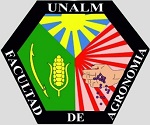Characterization and control of the causal agent of leaf spot in strawberry (Fragaria ananassa) under greenhouse conditions
DOI:
https://doi.org/10.21704/pja.v3i2.1315Keywords:
Leaf spot, Corynespora cassiicola, Strawberry, Fragaria ananassaAbstract
Strawberry (Fragaria ananassa) plants showing symptoms of leaf spot were found in the producing areas of Manchay Bajo, Pachacamac District, Lima, Peru. The responsible pathogen was isolated and observed under a microscope to examine its morphological characteristics and the size of its structures, resulting in its identification as the fungus Corynespora cassiicola. Healthy strawberry plants that had been inoculated with C. cassiicola in a greenhouse developed lesions after 3 days and exhibited symptoms consisting of dark brown spots that had light brown centers and were surrounded by yellow halos, which coalesced and subsequently caused necrosis of the whole leaf. In vitro tests demonstrated that the fungus Trichoderma harzianum strain T-22 showed antagonistic activity against C. cassiicola, causing 41.8% mycelial growth inhibition, and the fungicides fosetyl-aluminum (Aliette®) and thiabendazole (Mertect®a) inhibited mycelial growth by 100.00% and 96.32%, respectively. However, in vivo, 0.75 g/L of the fungicide azoxystrobim (Stronsil®) gave the best control of C. cassiicola and the lowest area under the disease progress curve (AUDPC), followed by 1.5 mL/L of thiabendazole (Mertect) under greenhouse conditions. The isolate was found to be pathogenic, and its morphological identification was confirmed.Downloads
References
Aamir, S., Sutar, S., Singh, S. K. & Baghela, A. (2015). A rapid and efficient method of fungal genomic DNA extraction, suitable for PCR based molecular methods. Plant Pathology & Quarantine, 5 (2), 74-81. Retrieved from http:// plantpathologyquarantine.org/PDFs/PPQ_5_2_6. pdf
Barnett, H. L. & Hunter, B. B. (1972). Ilustrated Genera of Imperfect Fungi. Minnesota, United States of America.
Carmona, M., Gally, M., Sautua, F., Abello, A., & Lopez, P. (2011). Use of azoxystrobin and triazoles mixtures to control late season diseases in soybean crop. Summa Phytopathologica, 37 (2), 134-139. Retrieved from http://www.scielo.br/ pdf/sp/v37n2/a09v37n2.pdf
Goncalves, R., De Sa, C., Duarte, A., & Bayma, M. (2013). Manual de Heveicultura para a Região Sudeste do Estado do Acre. Brasil. [30. may. 2017]. Retrieved from https://www.embrapa.br/buscade-publicacoes/-/publicacao/982145/manual-deheveicultura-para-a-regiao-sudeste-do-estado-doacre.
Déon, M., Bourré, Y., Giménez, S., Berger, A., Bieysse, D., de Lamotte, F., Poncet, J., Roussel, V., Bonnot, F., Oliver, G., Franchel, J., Seguin, M., Leroy, T., Roeckel-Drevet, P., & Pujade-Renaud, V. (2012). Characterization of a cassiicolin-encoding gene from Corynespora cassiicola, pathogen of rubber tree (Hevea brasiliensis). Plant Science, 185-186, 227-237. https://doi.org/10.1016/j. plantsci.2011.10.017
Ellis, M. B. (1971). Dematiaceous Hyphomycetes. Surray, England.
Jaramillo, E., Barrezueta, S., Luna, E., & Castillo S. (2017). Efecto biofungicida del gel de Aloe vera sobre Mycosphaerella fijiensis, agente causal de la Sigatoka negra en Musa (AAA). Scientia Agropecuaria, 8 (3), 273 - 278. http://dx.doi. org/10.17268/sci.agropecu.2017.03.10
Jayasuriya, K. Y. & Thennakoon, B. I. (2007). First report of Corynespora cassiicola on Codiaeum variegatum (croton) in Sri Lanka. Ceylon Journal of Science (Biological Science) 36, (2), 138-141. Retrieved from https://cjsbs.sljol.info/articles/ abstract/10.4038/cjsbs.v36i2.489/
Lorenzo, M. (2004). Prospección de hongos antagonistas en la provincia de Cienfuegos. Efectividad y posibilidades de reproducción de cepas nativas de Trichoderma spp. Fitosanidad, 8 (1), 64. Retrieved from http://www.redalyc.org/ pdf/2091/209117836021.pdf
Manju, M. (2011). Epidemiology and Management of Corynespora Leaf Fall Disease of Rubber Caused by Corynespora cassiicola (berk & curt.) Wei. (Thesis Ph.D.). University of agricultural sciences, Dharwad, India.
Miller, J. W. & Alfieri, S. A. (1974). Leaf spot of Ligustrum sinense caused by Corynespora cassiicola and its control. Phytopathology, 64, 255-256. DOI: 10.1094/Phyto-64-255 National Center for Biotechnology Information. (1988). National Library of Medicine. Retrieved from https://www.ncbi.nlm.nih.gov/
Pedroza-Sandoval, A. & Samaniego, J. A. (2009). Análisis del área bajo la curva del progreso de las enfermedades (ABCPE) en Patosistemas Agrícolas. In N. Bautista, L. Soto, & R. Pérez (Eds.), Tópicos selectos de Estadística aplicados a la fitosanidad (pp.179-189). Retrieved from: https:// www.researchgate.net/profile/Aurelio_PedrozaSandoval/publication/266259484_Analisis_ del_area_bajo_la_curva_del_progreso_de_ las_enfermedades_ABCPE_en_patosistemas_ agricolas/links/542af6f10cf277d58e8a0f02/ Analisis-del-area-bajo-la-curva-del-progresode-las-enfermedades-ABCPE-en-patosistemasagricolas.pdf
White T., J., T. Bruns, S. Lee, & J. Taylor, 1990. Amplification and direct sequencing of fungal ribosomal RNA genes for phylogenetics. In: M.A. Innis, D.H. Gelfand, J.J. Sninsky, and T.J. White (Eds.), PCR Protocols: A Guide to Methods and Applications (pp. 315-322). New York: Academic Press, Retrieved from https:// www.researchgate.net/publication/223397588_ White_T_J_T_D_Bruns_S_B_Lee_and_J_W_ Taylor_Amplification_and_direct_sequencing_ of_fungal_ribosomal_RNA_Genes_for_ phylogenetics










